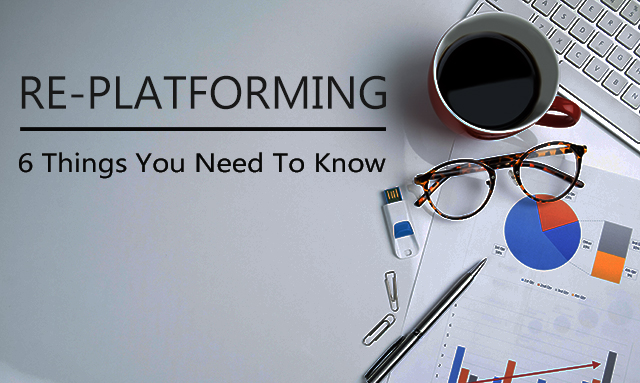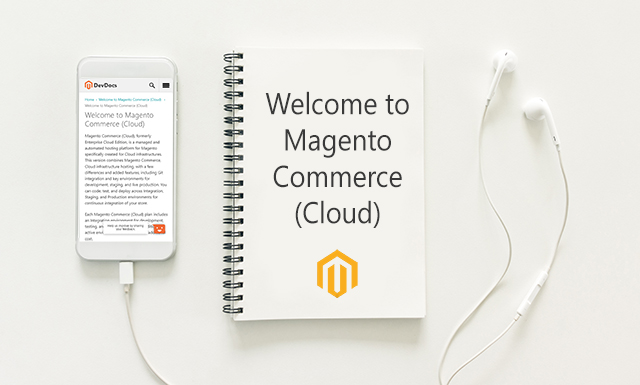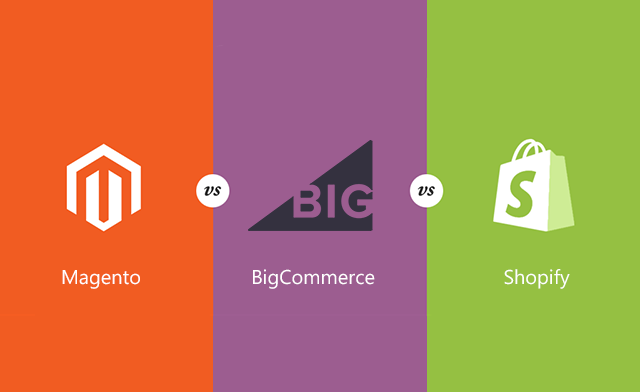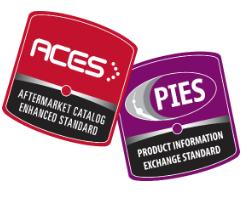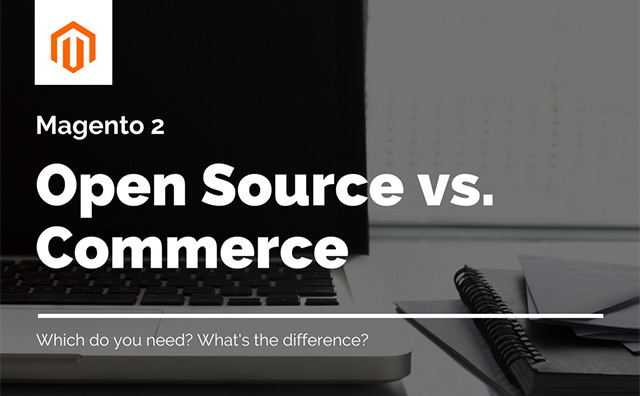There are many reasons why merchants consider re-platforming. Perhaps the business has outgrown the current platform. Maybe it’s a struggle to keep up with the platform financially. Alternatively, the platform is cumbersome to manage from the admin. Regardless of the scenario, making a switch isn’t an easy decision.
Put simply, re-platforming describes the process of moving a website, the online product catalog, shopping cart, and payment system from one eCommerce platform to another. We say simple, but in reality, the process can be complicated.
The word “re-platform” tends to generate very different reactions from eCommerce merchants. Some merchants shutter because of the complexities, budget, and potential problems of the entire process. Other merchants are excited about the opportunity of leveraging a new platform to fuel growth. Whether it’s an exciting opportunity or a necessary evil, when re-platforming in eCommerce, preparation is vital.
Here are six tips merchants need to know about re-platforming in eCommerce.
1. The Strategy Should Guide Your Process
In the early stages of re-platforming, doing preliminary legwork and planning is critical. It’s important to not only think of the here and now issues, but also goals and needs for the future of the website and business. Consider why the re-platform needs to happen.
Is the product catalog or sales volume outgrowing the current platform?
Is there a need for more flexibility or security?
Is there a need for more out of the box features and functionality?
Does the current platform not have all the tools needed to best serve mobile customers?
Plan out what needs to be accomplished from doing the transition. Rather than going for a catch-all solution, choose a platform that best meets the end goal. For example, a website design refresh will require a very different process than a complete migration to an entirely new system. A failing legacy system may call for a condensed timeline, while a full expansion may require more strategic forethought.
An actual re-platform project will generally involve complexity, time, and monetary resources. Only a carefully crafted migration plan will ensure the project is completed on time and budget. In the early stages of re-platforming, doing preliminary legwork and planning is critical. It’s important to not only think of the here and now issues, but also goals and needs for the future of the website and business. Consider why the re-platform needs to happen.
2. The Potential Advantages Are Transformational
Given the complexities involved, many merchants are hesitant to go through with a migration. They recognize the time and budget it takes for success, and look to maximize the legacy system for as long as possible. In reality, it’s important to recognize just how transformational the advantages of a new system can be. A platform suited to the current and future eCommerce needs can quite literally transform a business. The right eCommerce platform will integrate well with marketing efforts, better serve customers, and will increase the efficiency of the team running it and ultimately fuel growth.
The complexity of the process is not always apparent at the beginning of a migration project. Experience, planning, and research will help avoid surprises as much as possible. However, when executed successfully, re-platforming will make the process well worth the effort. If the upside is a positive transformation of current business operations, then pushing through even the most difficult stages will become more palatable.
3. The Disadvantages Can Be Significant
Despite all of the advantages listed with re-platforming, it’s important to balance those with potential drawbacks. Preparedness is especially true if the project goes wrong. When a migration effort goes south, merchants could lose significant revenue, audience trust, and efficiency. Being realistic about possible disadvantages can help to prevent issues and setbacks from happening.
An article from Forbes.com outlines some of the most common re-platforming risks, along with valuable suggestions on how to prepare for and overcome them.
Detailed below are several common re-platforming risks
Delays and Budget Overruns can kill a project if not careful. Fortunately, careful planning, regular benchmark reports that measure progress and current budget spend can help to avoid this issue.
Incomplete Product Features occur either due to overpromise on behalf of the developer or partner, or a tight timeline that pushes previously in-scope implementations out of scope. Merchants can overcome this risk by carefully vetting individual partners and agencies, while strictly focusing on the minimum viable product (MVP) for phase 1 of development.
Indecision can become fatal if it begins to impede project timelines. A previously streamlined process can get out of whack quick if a lack of decisions halts progress. Assigning defined decision makers within the implementation team and determining communication/decision standards ahead of time can help.
Perfectionism is a valuable business trait. However, taken to the extreme, it can become dangerous. The goal of the initial re-platforming project should be improving the current situation, not getting everything right the first time. Avoid this risk by keeping a list of desired features for the future, and setting expectations on what the first new iteration will provide, again focusing on MVP.
Knowledge Gaps tend to manifest themselves between a legacy platform and the new platform, primarily if the new platform depends on the organizational buy-in. Manage them by training staff on the new platform, and keeping a representative from each affected area of the business involved in the implementation.
4. The Timeline Tends to be Extensive
A complete re-platforming of an eCommerce website will take time. Part of that is evident from the points discussed above; the planning itself should be done carefully, instead of rushed or ignored.
Comprised of six phases, a complete migration or re-platform project will include:
- Planning and Strategy
- Data Migration
- Platform Integrations
- User Design and Experience
- Launch
- Post-Launch Evaluation
These phases are not always linear. Data migration can occur even as a development team begins to work on the user-facing design of the new platform. Still, each of these steps comes with time commitments that are important to bear in mind.
At the very least, that process can take a few months. In many cases, the entire project (including pre-project planning and post-launch evaluation) can take much longer. Either way, never go into a project without at least some realistic idea of the timeline required for successful completion.
5. The Budget Can Make or Break the Re-Platforming
Like time constraints, budget tends to be among the most critical variables in the process. Simply put, not being careful could mean exploding the project or seeing it fail to come to fruition. At best, the project goes over budget. At worst, the entire business is at risk of survival.
Consider the case of the U.S. Air Force, which spent more than $1 billion on moving to a new ERP platform before scrapping it because of a lack of progress. This case study has become a cautionary tale for any merchants looking to engage in a similar process, even on a smaller scale.
That doesn’t mean every project is doomed to fail. It does, however, suggest that merchants need to be both careful and strategic in the budgeting process. In the earliest planning stage, determine how much is willing to be spent while still getting a positive return on investment for the migration. Then, stick to that number as an upper limit, even in the face of anything bar exceptional circumstances.
That means evaluating all options according to their price and opportunity cost. Don’t forget that it’s possible to experience some downtime and lost revenue. In the initial budget evaluation, include hidden or continual costs that may incur after the initial migration. The more planning done early, the less likely it will be to break the set budget.
6. The Right Partner Can Make All the Difference
Finally, don’t underestimate the importance of a reliable development partner that can guide the team through the re-platforming process. The platform options will be immense; in addition to individual platforms, merchants will have the choice to go with cloud-based SaaS or on-premise hosted solutions. Each comes with challenges and benefits, all worthy of consideration based on the situation.
The complexity of the project calls for a development partner. Almost by definition, most merchants don’t go through the process of migrating to a new eCommerce platform frequently. As such, recognize the value in a partner with the experience in the individual steps involved and required, along with the best practices outlined above. Even one step in the wrong direction, particularly if it comes early in the planning and direction-setting stage, can go south quick.
For this type of project, it is essential to choose a reliable partner. Not a quick-fix developer with a fundamental goal of getting the business at all costs, but a partner who has your best interests in mind. This partner can help guide throughout the process, and help educate why re-platforming is necessary in the first place. The result will be a more goal-driven, strategic process with a significantly higher chance of success.
Finding that partner, of course, can be tough. Merchants need professionals who are certified and experienced in this area, while also being willing and able to accommodate every unique situation. After all, no two eCommerce merchants are alike.
InteractOne has significant experience in eCommerce migrations, re-platforming and data migrations, and we can apply that experience. Contact us to get to learn more about migrating or re-platforming to Magento, and to discuss potential first steps in a future partnership.



